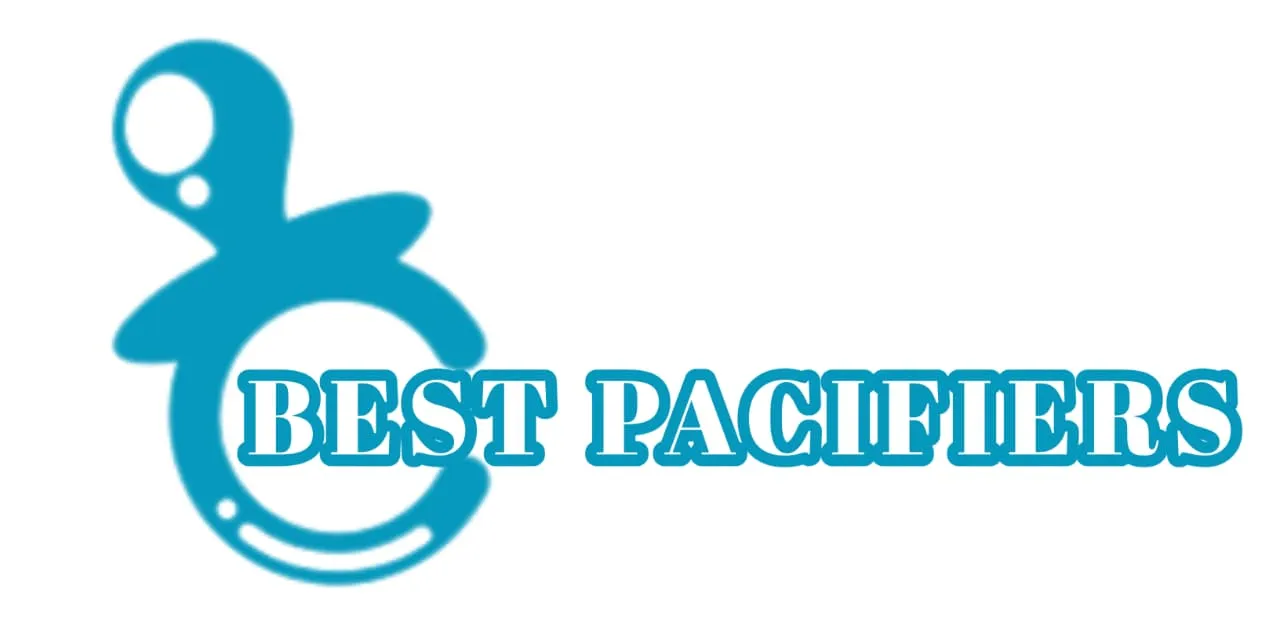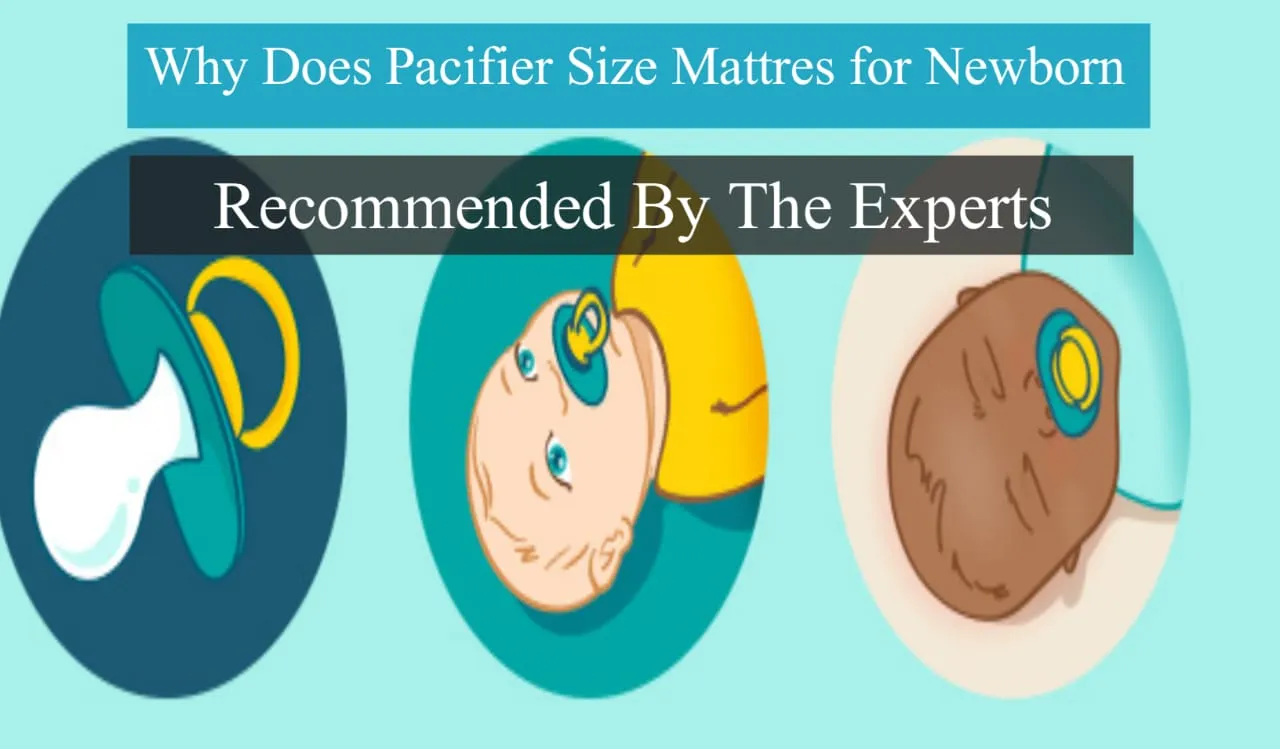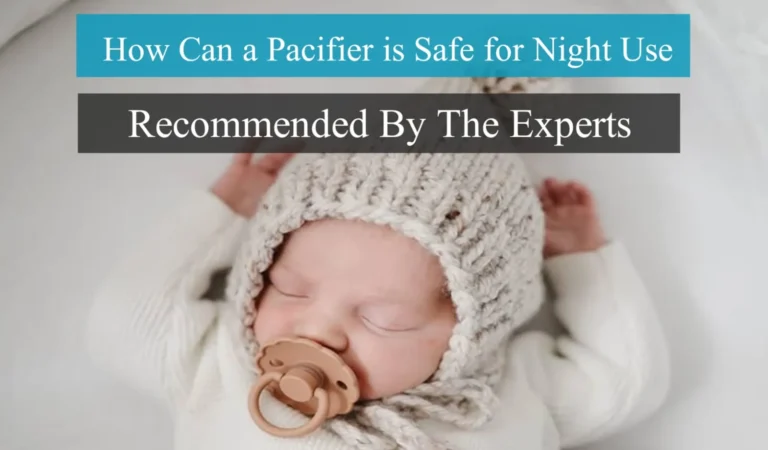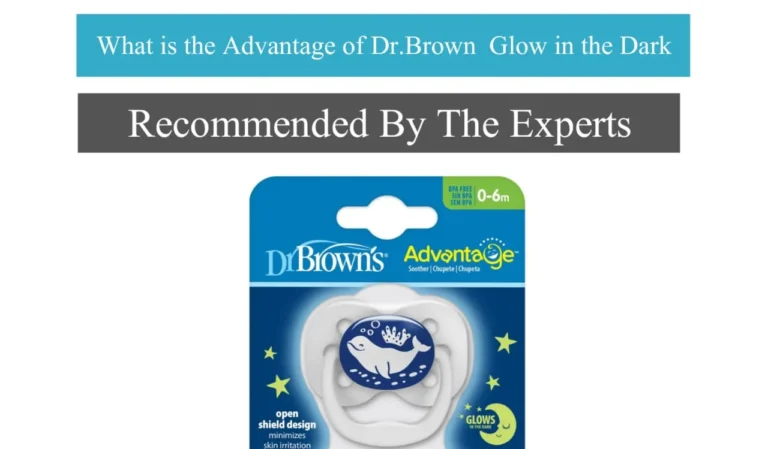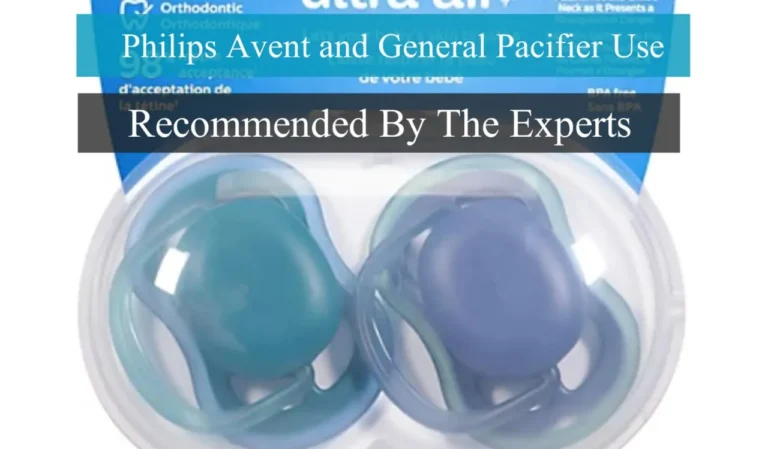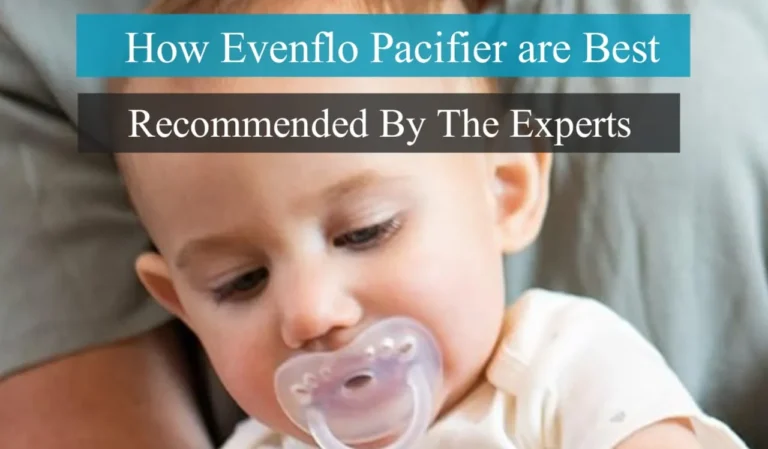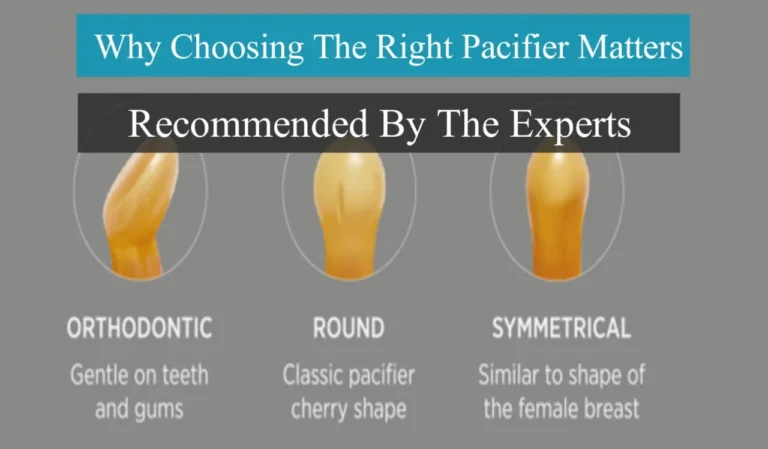Why Does Pacifier Size Matter for Newborns? : Parent’s Guide
Discover why does pacifier size matters for newborns, how to choose the right fit, and ensure comfort, safety, and healthy oral development from day one.
When I became a parent in the first time, I thought that a pacifier was merely a pacifier, which was supposed to calm my baby and provide me some rest. However, when I arrived at the store and found numerous shapes, sizes, and designs, I soon realized that it was not that easy to choose the right one. My baby spit out some, suffocated on others and even seemed to feel sick with pacifiers that were supposedly made to fit newborns. It made me feel confused, frustrated and guilty as though I was doing something wrong when all I wanted was to comfort.
That is when I began to read deeper and found out one thing that most parents do not take into consideration; the size of the pacifier makes a difference, particularly when it comes to newborns. The nipple, the shield, and the general design impact the comfort, safety, and oral development of the baby directly depending on the size. When I learned the science behind it, it became much easier to make the right choice and my baby finally found its way into peace with the right fit. In this blog, I will guide you through the importance of a best pacifier size and the dangers of selecting the wrong size along with how to choose the right one when purchasing it.
Why Size Matters when it comes to Comfort
Among the first things I discovered as a new parent was that comfort is not only determined by whether the pacifier appears to be soft or not. The size of the pacifier actually determines the right fit in the mouth of my baby. A pacifier that is oversized may be too much to handle, and this may cause the baby to choke or spit it out. On the one hand, that which is too small might not offer the calming effect they require, and the result is constant fussiness. This trial-and-error process revealed to me that pacifier sizing is not all about age but it is about proper fit to the stage of development of the baby.
Newborns especially have very sensitive mouths and smaller oral cavity, such that a slight mismatch can cause them to be uncomfortable. To soothe and resemble the shape and movement of natural breastfeeding, a pacifier should be of the appropriate size. I discovered that after I chose a size that matched my baby and her age, and her oral needs, the process of switching between feeding and soothing became easier. The appropriate size was neither overwhelming nor confusing and instead, it gave us a feeling of ease.
How Pacifiers are Made
Prior to parenthood, I never considered that so much science could be involved in the design of a pacifier. The brands pay closer attention to the length, width, and shield design of nipples to fit babies at varying ages of maturity. In newborns, pacifiers are designed to be smaller to fit their tender mouths so that they do not choke or have trouble with large nipple sizes. The science also considers the role that sucking plays in helping a baby develop his jaw muscles and promotes healthy growth of the mouth.
I was most surprised to learn how the size of pacifiers affects the position of the tongue and how we breathe. A nipple that is too long will impede airflow or force the tongue into an unnatural position. On the negative side, a pacifier that is too short cannot fulfil the natural sucking instinct of the baby and will leave him/her disappointed. This knowledge helped me to see it differently- I was not selecting a pacifier, I was selecting a device that would influence the development of my baby, their comfort, and even their dental health in the future.
Dangers of Using the Incorrect Size of Pacifier
At first, I did think that the sizing system of pacifier is just a marketing stunt to sell more. However, when I inadvertently put a pacifier that was a little too big in the mouth of my newborn, I was soon made aware of the dangers. My baby gagged, was not willing to suck, and cried still more than before. That experience taught me that the incorrect pacifier size may cause severe problems, including the risk of choking and oral developmental problems.
A pacifier that is either too small or too large may also block breathing and make a baby experience unnecessary stress. The incorrect size used over the long term can affect the alignment of the jaw or even cause dental issues as the teeth start to develop. I do not need pacifier to leave a permanent mark on my child as a parent. After switching to the correct size, I saw instant results, feeding was easier, sleep came with less struggle, and my baby appeared much happier.
The Relationship Between the Size of Pacifier and Oral Development
The one thing I would have liked to know sooner was the effect of pacifier size on oral development. Young infants use the sucking reflex to nourish themselves, but also to exercise their facial and jaw muscles. When the pacifier is fitted properly it will not impose excessive pressure on the palate or gums and will instead allow natural development. It is simply made a useful instrument rather than a handicap.
However, when the wrong size is used it can cause unnecessary strain. When the nipple is too wide or long, it will push against the palate in such a manner that it may lead to misalignment as a baby grows. Conversely, a pacifier which is too small will not give adequate support to muscles which are developing. I understood that by simply following size recommendations, I will be able to protect my baby oral health and make sure that they enjoy the process of sucking without all the unintended consequences.
Understanding Pacifier Size Markings
The first thing I saw when I examined pacifier packages was age labels: 03 months, 36 months, 618 months, and older. I initially thought that they were mere suggestions but have discovered that they are really developmental needs. In infants, even the smallest size is specially fitted to ensure that the tiny mouths and fragile sucking abilities can fit it. These are not random numbers, but rather guidelines based on pediatricians, dentists and product designers.
I however found out that not every brand sizes pacifiers in the same way. The size of the nipple length or shield size in one company may be slightly different than another company with a 0-3 month label. This also implied that I needed to pay attention to the age label, the shape and design. In conclusion, the decision on which pacifier to get my baby was based on a bit of testing and observation but with the knowledge of what is on those labels, I had a good starting point.
How I Adjusted Pacifier Size as My Baby Grew
As my baby got older, I was soon to learn that pacifier size was not a permanent decision. A pacifier that was so good during the first month became too small in a few months. My baby would chew on it rather than suck it and I could see it was not having the same effect as before. It was then that I came to know that like clothes and diapers, pacifiers also have to be upsized.
The change of size was a milestone to me- it was an indication that my baby was growing and developing. I also discovered that a gradual approach was most effective with making the transition, by introducing the new size in combination with the old until my baby was comfortable. I did not fight with these changes because of preserving the purpose of the pacifier. It was a minor change that resulted in significant change in our everyday life.
The Place of the Orthodontic Design in Pacifier Sizing
When I heard about orthodontic pacifiers, I was not quite certain of the differences between them and regular pacifiers, but it soon became clear to me that it is the size and shape that has a direct impact on the oral development of a baby. As opposed to the regular round ones, orthodontic pacifiers are shaped to fit against the baby gums and the tongue naturally. The proper size will not cause the baby to have his mouth in an awkward position that may cause dental problems in the future. Applying the correct size in this category, there is a decreased possibility of the misalignment of teeth, bite problems, or the development of difficulties in speech development as the baby grows. I realized that the selection of orthodontic pacifiers was not only a matter of fashion but the future of the oral health.
The other crucial point is that orthodontic pacifiers are designed according to developmental stages, and an orthodontic pacifier, which is appropriate to a newborn baby, would be very different compared to the one that fits a six-month-old infant. Although it may seem small, it is the correct size required to allow the natural movement of the tongue and align the jaw. I used to believe that a one-size-fits-all approach can be effective, however, after observing how my newborn reacted to various pacifiers, I realized that a good fit would help to make the transition to feeding easier and minimize fussiness. The slight variations in size and design actually determine the comfort of a baby and their oral development.
Dangers of Picking an Incorrect Size of Pacifier
One day, I also inadvertently put a pacifier in the mouth of my newborn child, which was too big and I immediately saw the difference. The pacifier was too large to fit in my baby and sucking was hard and painful. Rather than relaxing, my baby got fussier and spit it out. It was at that point when I understood that the wrong size does not only not soothe, but it can also annoy and even cause such side-effects as gagging or excessive drooling. This experience showed me that the size of pacifiers is not a minor aspect but is key to safety and comfort.
As time went by, I also found out that the incorrect size pacifier can also have more severe effects on oral development. A pacifier that is either too big or too small might not allow the tongue to move properly, and a pacifier that is too big can push against the gums and the teeth improperly. Both of these can cause misalignment or pain during feeding. Now I pay attention to the recommended age and size of pacifier given by the manufacturer when I decide to provide a pacifier. With mere attention to detail, long-term problems can be avoided and the pacifier used as a comfort aid instead of a frustrating experience.
How to Find the Right Pacifier Size
When I began to shop pacifiers, the number of options was simply overwhelming, but I quickly learned that size labels simplify the process. The majority of brands mark pacifiers with age categories, e.g., 0-3 months, 3-6 months, or 6-18 months, and that provides parents with an initial point. In the case of newborns, it is important to maintain the 0-3 month size since it is made to fit in the small mouth and small sucking power. I discovered that it was better to check the size but also the shape and materials in order to choose the most appropriate one to my baby.
The second thing I started doing was to take note of the reaction my baby had upon the use of a new pacifier. Sometimes the label would indicate that it was the correct size but the shape or design just did not fit my newborn. Just watching to see how well the pacifier stayed in place, whether it gagged or not and whether it actually worked was what made all the difference. With time, I learned to exercise confidence in the appropriate size by incorporating the guidelines of the manufacturer together with the needs of my baby. Such personal attention made the use of pacifier smooth and stress free to both of us.
Tips on Changing Pacifier Sizes When the Babies Grow
As a parent, one of the problems that I had to grapple with was when to move to the next size of the pacifier. Early on, I was concerned about the timing of the transition either too soon or too late but I trained myself to observe the signals given by my baby. When the pacifier appeared to be too small, when it came out often, or when it ceased to comfort my child, it was a good indication that he or she needed a larger size. Manufacturers tend to recommend age ranges but I found watching my babies comfort and ability to suck to be the most accurate.
When changing to the new size, I used a gradual process, giving my baby both the old and the new pacifier until he/she accepted the new one. This allowed to avoid resistance and still make the larger pacifier provide comfort. I also found that larger pacifiers enabled my baby to suck more as he got older and avoided him feeling frustrated when he was being soothed. I followed the development of my baby, and therefore, the changes of the pacifier were not stressful and smooth. The perfect timing and size manipulations made the pacifier a helpful calming device at each phase.
FAQs of why does pacifier size matter
Final Thoughts
Reflecting on my experience of using pacifiers, I can definitely say that size is one of the most crucial aspects that parents are to pay attention to. It is a tiny detail that has a tremendous impact on comfort and safety and oral development. The experience of my baby taught me that the correct size of the pacifier provides a smoother transition in the process of feeding, less fussiness, and the absence of long-term problems with the teeth.
By listening to the instructions given by the manufacturers and monitoring the reaction of my baby, I was able to select pacifiers that actually worked. Changing sizes as my child grew was an easy habit and this made pacifier use safe and effective. To any new parent who may be curious why size of the pacifier is important, I can attest that it is worth the extra care. Using the right size of pacifier will make the difference in the safety of your newborn, comfort, and soothing.
